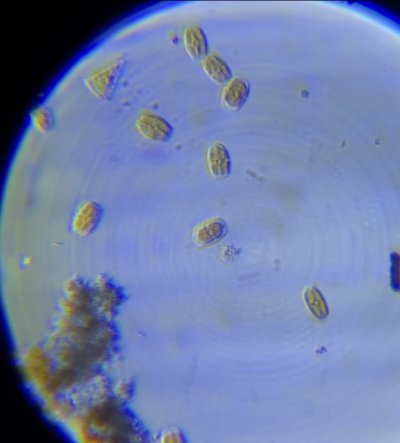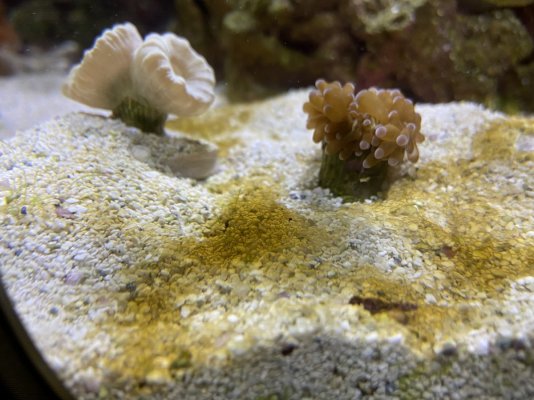- Joined
- Jun 5, 2020
- Messages
- 32
- Reaction score
- 20
Hello reef friends and experts!
I was wondering if anyone could help me identify this type of dinoflagellate. On the sand bed, it looks more like diatoms. No appearance of stringy/snotty bubbles, just brown patches that appear during the day and vanish at night. Under the microscope they are not spinning.
Parameters:
Cal: 420
Alk 8.5-9
Phos: now bumped up to 0.04 ppm from 0.00 ppm
Nitrate: 5-10 ppm from undetectable
Test kit used: Hanna Checkers for Cal, Alk, Phos and API for nitrate


I was wondering if anyone could help me identify this type of dinoflagellate. On the sand bed, it looks more like diatoms. No appearance of stringy/snotty bubbles, just brown patches that appear during the day and vanish at night. Under the microscope they are not spinning.
Parameters:
Cal: 420
Alk 8.5-9
Phos: now bumped up to 0.04 ppm from 0.00 ppm
Nitrate: 5-10 ppm from undetectable
Test kit used: Hanna Checkers for Cal, Alk, Phos and API for nitrate
















